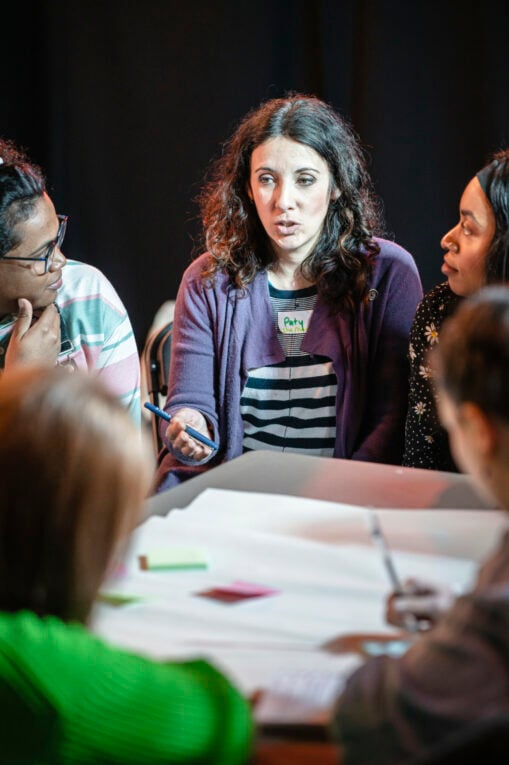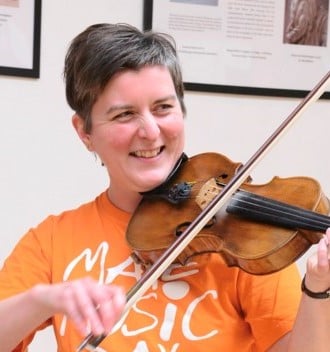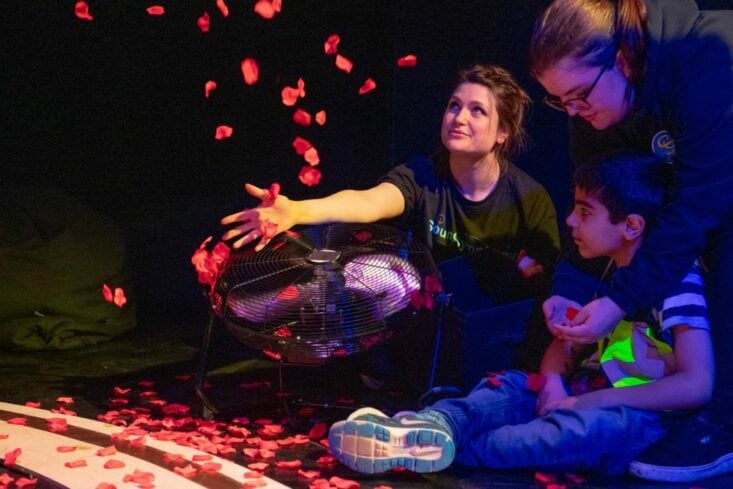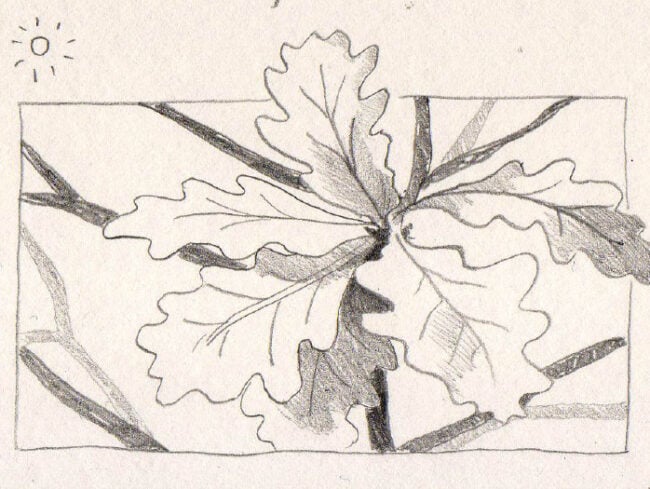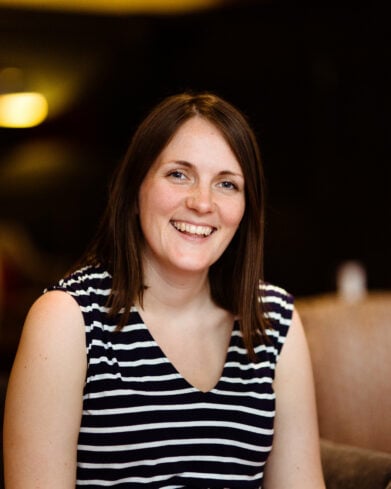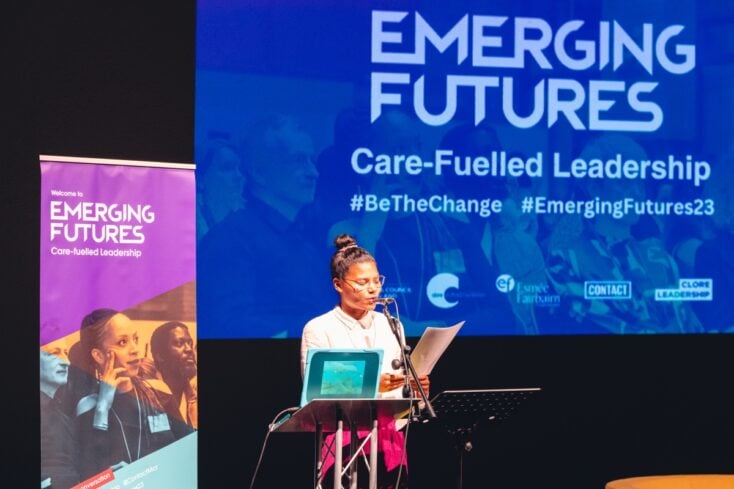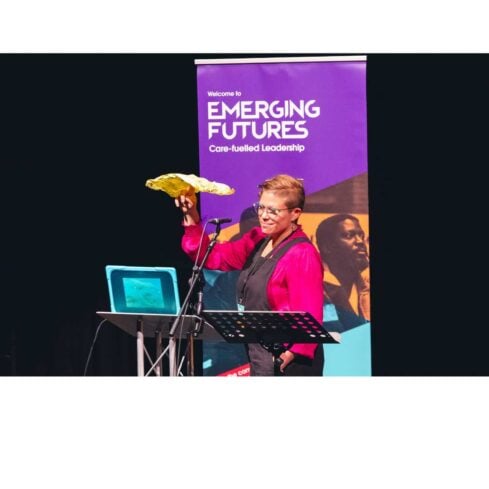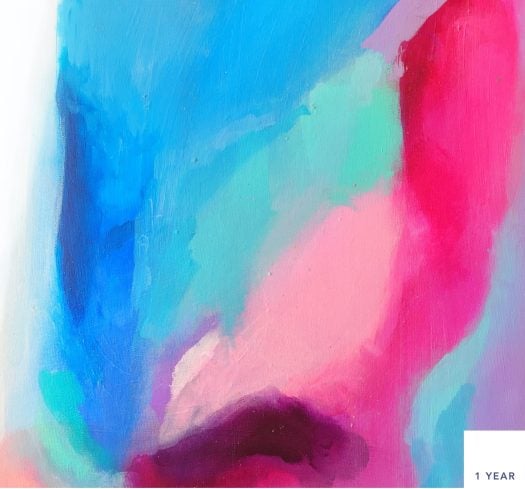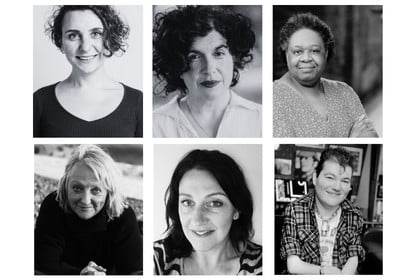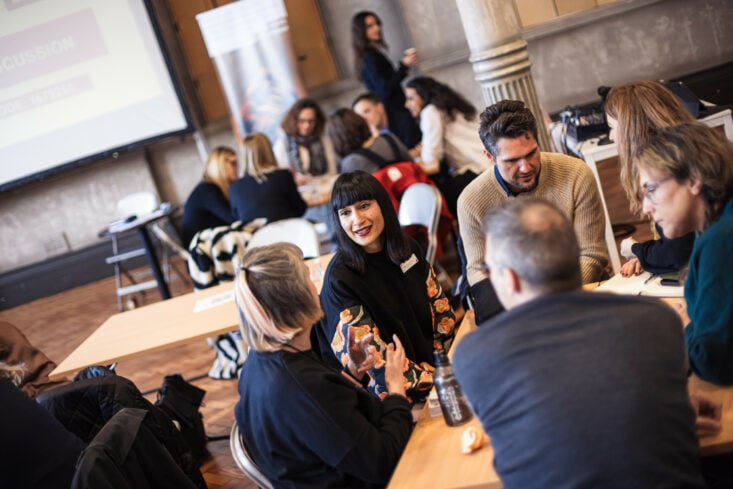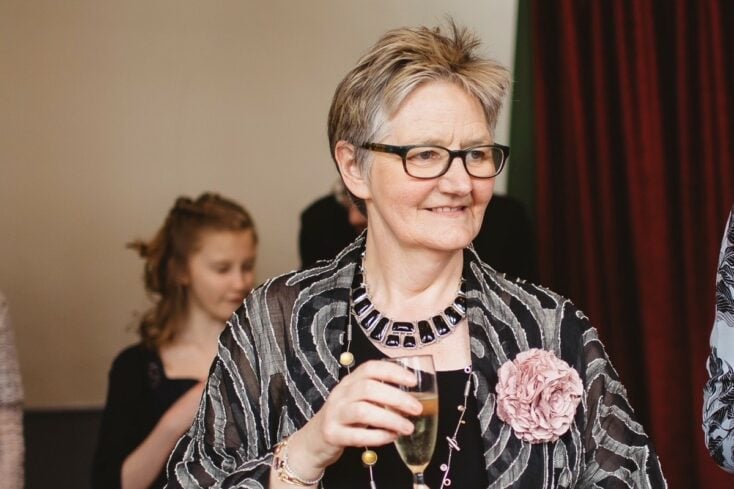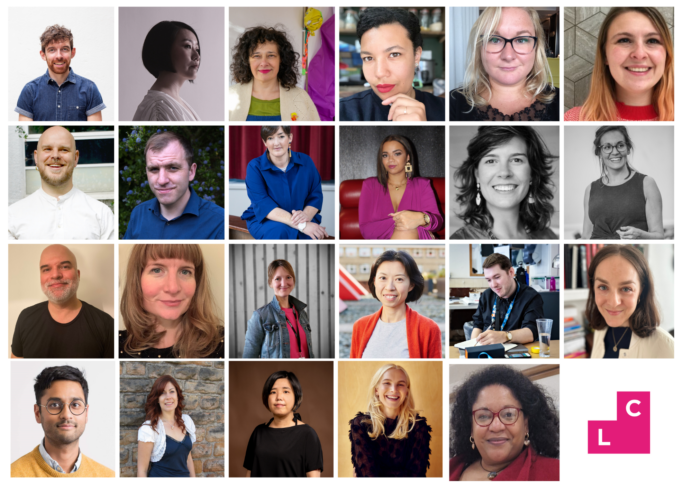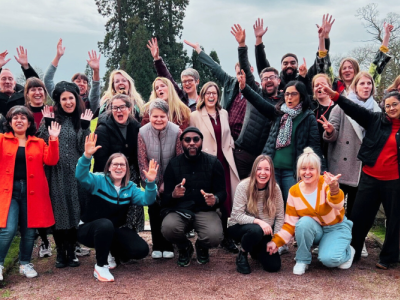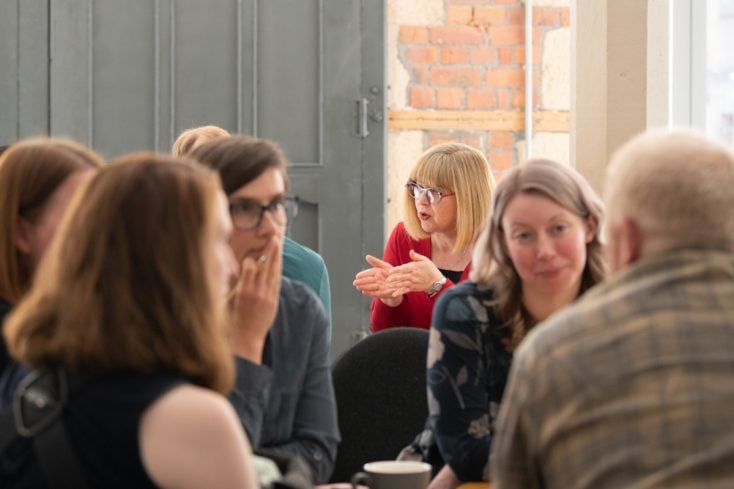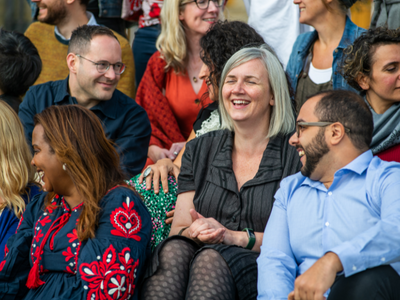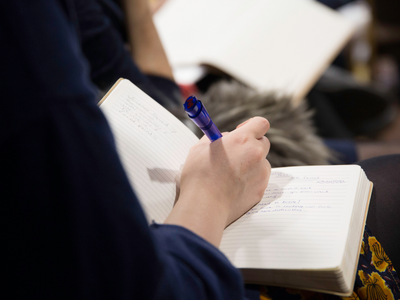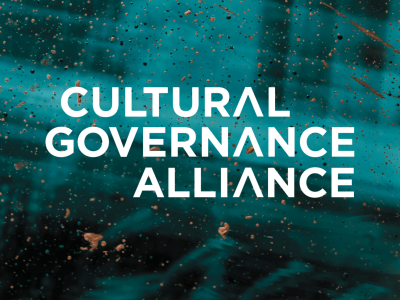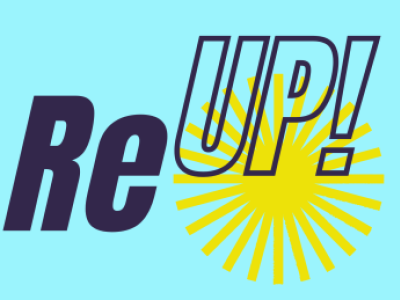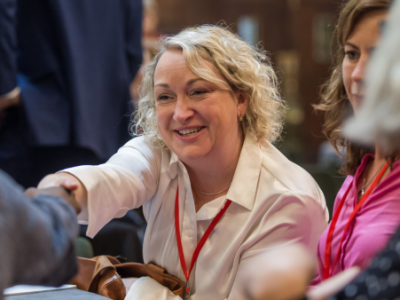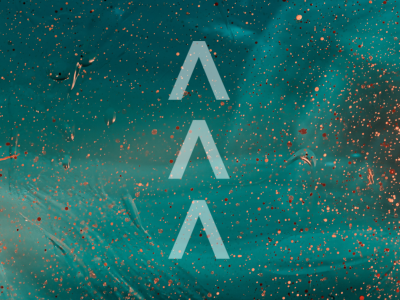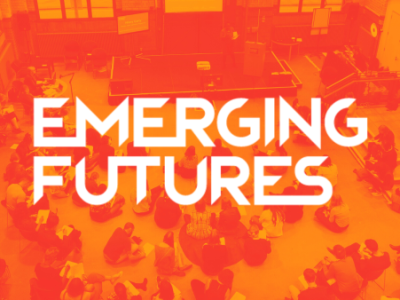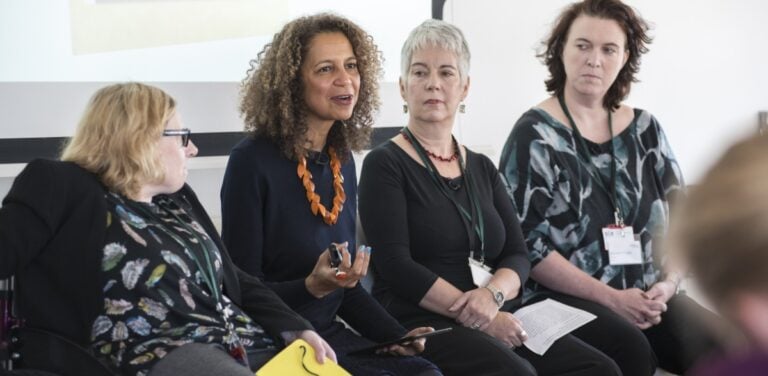Transforming our recruitment practices: Inclusive Recruitment
In a world and society that is constantly changing, one thing stays the same: we are all better when we bring everybody in. Being inclusive in the way we work, with the people we work, within our teams, and creating these spaces where we include everyone are key for us to make meaningful change in our organisations, in our society.
Having people with different lived experiences and backgrounds, and centring disabled people, can create richer and more meaningful experiences to how we work, what we offer as an organisation, who we are as a team, professionally and personally, and how we connect with other people and our audiences.
We want to make this a genuine commitment, and together, the cohort of the Inclusive Cultures programme 2023, have created a collective approach to inclusive recruitment, to start this transformative work within arts and cultural organisations. This is not just a dream, it is a practical roadmap to start making change to become truly inclusive.
We held a session where we invited all contributors to the programme to think collectively about what more we can do, what solutions we can suggest and what further questions we may want to ask when we are thinking about inclusive recruitment. We looked at this in eight different areas within the recruitment process:
1. Outreach: How do we start the conversation with more d/Deaf, Disabled and/or Neurodiverse people to join our teams with whom we are currently not engaging? Where can we find them?
Work with partners who support these networks, develop deeper relationships and good communications with those groups we want to engage with. One idea is to seek those that run supported apprenticeships.
Research to see where people really hang out, a lot happens outside of the mainstream, such as niche social media and on WhatsApp groups. Also ensure you are engaging with organisations that represent communities from d/Deaf, Disabled and/or Neurodiverse communities.
Provide staff training and become a Disability confident employer so that the whole team has a good level of understanding.
2. Callout: What are our job posts missing? Are they in accessible formats? Do they convey all the information people need to be able to apply / interested in us?
Job descriptions should include:
- Alternative versions of a job pack and ways to apply (such as BSL, Easy Read, Audio Files).
- Videos, opportunities to meet in advance.
- A clearly stated salary bracket.
- Clarity and openness to part time or flexible working.
- Realistic and longer lead timelines to minimise barriers to inclusion.
As yourself – Are the desired ‘required skills’ a potential barrier to people considering applying even though they could be qualified in other ways?
Offer the ability to connect with HR department (or, for smaller organisations, the person responsible for HR) directly to say what is required by the individual so that a bespoke approach can be tailored.
3. Selection: Are our current selection processes fit for purpose? How much are we considering motivation rather than skills? What if someone is missing the skills listed for the job?
Is a degree ever really needed? Focus on motivation and capability rather than specific skills – particularly if there are multiple needed for the role, and provide training for any missing skills instead.
Is there a better way to reframe the essential skills and experience for a role as areas of development/opportunity within a role?
Include soft skills in the job description: what kind of person might you look for?
Give people materials before the interview in an ‘open book’ exam style.
Clearly offer mentoring and support as part of the job offer.
Think twice before asking people about gaps in their CV – life happens and professional journeys are non-linear.
4. Interviewing: Are our current selection processes fit for purpose? How do we move past structural biases at this crucial stage? Are we considering motivation rather than skills? What if someone is missing skills listed for the job?
Give people access to interview questions and clear information in advance:
- Photo route to location if in person
- Dress code
- Times
- Ask yourself who will be on the panel – ensure it is truly diverse
Invite an external stakeholder to be part of the interview panel, someone who might offer a diverse point of view or provide useful context during deliberation.
Consider the tone of the interview: how is the space welcoming and supportive, acknowledging an interview is a two-way process.
Reimagine the competency interview framework to feel less like an exam. Does the interview scenario match what the experience in the job will be?
Consider whether an interview is the only way to select the right candidate. Might this format only favour extroverts who are comfortable “boasting”?
5. Appointment: How can we select the best person for the organisation? What does ‘best’ mean to you and your team within an Inclusion & Diversity perspective?
Have a two-stage conversation process: involve people in the team who are not ‘interviewing’ to chat about the work culture etc.
Discuss who you would like to appoint as a team, and avoid appointing someone according to hierarchical positions.
Allow for personal agency in defining best and avoid (subconscious!) ‘similarity bias’ – hiring people who seem just like you.
6. Induction: How can we match the recruit’s needs with the team’s needs? What approach can work best to ensure they thrive with/in the team?
Ask people first for what they need, so they don’t have to do that extra labour. Listen to the person’s needs and don’t assume their needs are the same as another person’s. Allow space and time for people to share their needs – they may not feel safe to do this straight away.
Create a ‘first two weeks’ schedule for the new starter which you share with them on day one. Include meetings, research tasks, plenty of 1-2-1 time with different members of the team & times for reflection in the schedule.
Ensure that there is a buddy/mentor for the new recruit.
Properly use access riders and statements – revisit them, treat them as an iterative document that recognises that needs change in different places and spaces, with different people. Do not always approach this alone, approach as a team when it is appropriate.
Create an ‘All about me’ document for all new starters to share with the team – and for existing staff if that’s an innovation, including ‘how I work’.
7. Check in: How can we ensure our recruit is still interested and enabled to contribute, enrich and make change with the team?
Embrace a values-led culture, with open conversations with line managers.
Set up mutual expectations and opportunities for two-way feedback.
Build in time and space for reflection and be proactive with check-ins.
Listen deeply.
Continue to offer more contact points within the organisation – a structured buddy system or a coach.
Ensure HR software is inclusive and make policies easy to access.
8. Retention: Now that we’ve done all this work, how can we ensure our recruit stays in the job and keeps contributing and making change with/in the team?
Build in regular check-ins and ensure voices are heard. Actively ask for feedback about the environment. What’s working? What isn’t?
Get to know the person and understand how they work.
Introduce mentoring schemes within the organisation – staff developing mentoring relationship with each other, through a supported programme.
Develop constant work on keeping a safe psychological space.
Following this conversation with the Inclusive Cultures 2023 cohort, there are key consistent elements that come through from issuing a call out through to ensuring retention of a new candidate to be truly inclusive. This includes understanding people’s individual needs, and offering materials in alternative formats. Other key considerations are the support we can provide and the spaces we create within our organisations, where we truly listen, encourage conversations and two-way feedback, as well as providing support via mentors or buddy systems that welcome people to the team in a more profound and meaningful way. After all, we can only create this transformative change if we do it together.
Finally, let’s recognise that we are not doing this work in a vacuum. As one IC 2023 participant stated: “The cultural sector needs to radically change and recognise the silent violence of disableism, which intersects with racism, classism, queerphobia. We should be honest about the past, and be transparent about how we are moving forwards. Having this clarity is showing we care.”
